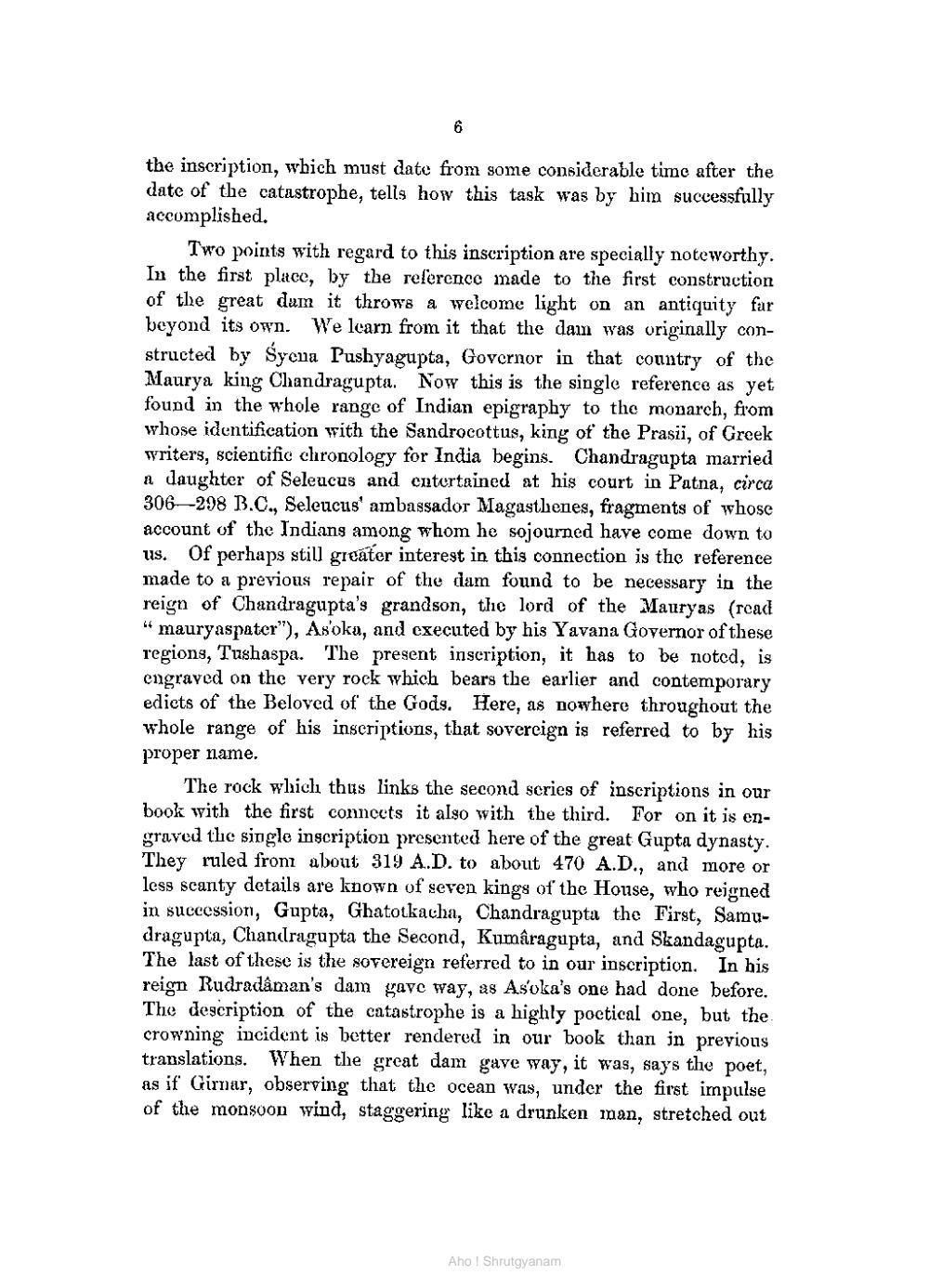________________
the inscription, which must date from some considerable time after the date of the catastrophe, tells how this task was by him successfully accomplished.
Two points with regard to this inscription are specially noteworthy. In the first place, by the reference made to the first construction of the great dum it throws a welcome light on an antiquity far beyond its own. We learn from it that the dam was originally constructed by Śyena Pushyagupta, Governor in that country of the Maurya king Chandragupta. Now this is the single reference as yet found in the whole range of Indian epigraphy to the monarch, from whose identification with the Sandrocottus, king of the Prasii, of Greek writers, scientific chronology for India begins. Chandragupta married a daughter of Seleucus and entertained at his court in Patna, circa 306-298 B.C., Seleucus' ambassador Magasthenes, fragments of whose account of the Indians among whom he sojourned have come down to us. Of perhaps still gicáter interest in this connection is the reference made to a previous repair of the dam found to be necessary in the reign of Chandragupta's grandson, the lord of the Mauryas (read "mauryaspater"), Asoka, and executed by his Yavana Governor of these regions, Tushaspa. The present inscription, it has to be noted, is engraved on the very rock which bears the earlier and contemporary edicts of the Beloved of the Gods. Here, as nowhere throughout the whole range of his inscriptions, that sovereign is referred to by his proper name.
The rock which thus links the second scries of inscriptions in our book with the first connects it also with the third. For on it is engraved the single inscription presented here of the great Gupta dynasty. They ruled from about 319 A.D. to about 470 A.D., and more or less scanty details are known of seven kings of the House, who reigned in succession, Gupta, Ghatotkacha, Chandragupta the First, Samudragupta, Chandragupta the Second, Kumâragupta, and Skandagupta. The last of these is the sovereign referred to in our inscription. In his reign Rudradáman's dam gave way, as Asoka's one had done before. The description of the catastrophe is a highly poctical one, but the crowning incident is better rendered in our book than in previous translations. When the great dam gave way, it was, says the poet, as if Girnar, observing that the ocean was, under the first impulse of the monsoon wind, staggering like a drunken man, stretched out
Ahol Shrutgyanam




